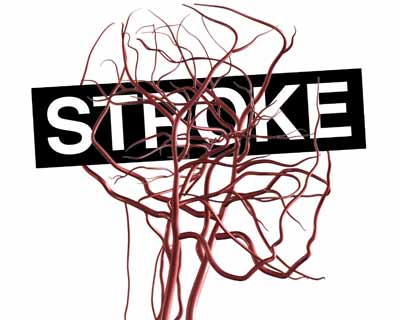- Home
- Editorial
- News
- Practice Guidelines
- Anesthesiology Guidelines
- Cancer Guidelines
- Cardiac Sciences Guidelines
- Critical Care Guidelines
- Dentistry Guidelines
- Dermatology Guidelines
- Diabetes and Endo Guidelines
- Diagnostics Guidelines
- ENT Guidelines
- Featured Practice Guidelines
- Gastroenterology Guidelines
- Geriatrics Guidelines
- Medicine Guidelines
- Nephrology Guidelines
- Neurosciences Guidelines
- Obs and Gynae Guidelines
- Ophthalmology Guidelines
- Orthopaedics Guidelines
- Paediatrics Guidelines
- Psychiatry Guidelines
- Pulmonology Guidelines
- Radiology Guidelines
- Surgery Guidelines
- Urology Guidelines
In Patient Rehab Recommended Over Nursing Homes for Stroke Rehab

Dallas : For the first time, guidelines have been developed by the American Heart Association/American Stroke Association for rehabilitation after a stroke.
“Previous guidelines have focused on the medical issues involved in the initial management of stroke, but many people survive a stroke with some level of disability. There is increasing evidence that rehabilitation can have a big impact on the survivors’ quality of life, so the time is right to review the evidence in this complex field and highlight effective and important aspects of rehabilitation,” said Carolee J. Winstein, Ph.D., P.T., lead author of the new scientific statement published in the American Heart Association journal Stroke.
Whenever possible, the American Stroke Association strongly recommends that stroke patients be treated at an in-patient rehabilitation facility rather than a skilled nursing facility. While in an in-patient rehabilitation facility, a patient participates in at least three hours of rehabilitation a day from physical therapists, occupational therapists, and speech therapists. Nurses are continuously available and doctors typically visit daily. An in-patient rehabilitation facility may be a free-standing facility or a separate unit of a hospital.
“If the hospital suggests sending your loved one to a skilled nursing facility after a stroke, advocate for the patient to go to an in-patient rehabilitation facility instead unless there is a good reason not to such as being medically unable to participate in rehab. There is considerable evidence that patients benefit from the team approach in a facility that understands the importance of rehabilitation during the early period after a stroke,” said Winstein, who is a professor of biokinesiology and physical therapy at the University of Southern California in Los Angeles, California.
Caregivers should also insist that a stroke survivor not be discharged from the hospital until they have participated in a structured program on preventing falls. This includes education about changes to make the home safer (such as removing throw rugs and improving lighting), minimizing the fall risk resulting from the side effects of medication, and safely using assistive devices such as wheelchairs, walkers and canes.
“This recommendation will probably change medical practice. Even the top stroke centers may not have a formal falls-prevention program, but it is very important because a high percentage of patients end up falling after a stroke,” Winstein said.
Other recommendations include:
- Intense mobility-task training after stroke for all survivors with walking limitations to relearn activities such as climbing stairs.
- Individually tailored exercise program so survivors can safely continue to improve their cardiovascular fitness through the proper exercise and physical activity after formal rehabilitation is complete.
- An enriched environment (which might include a computer, books, music and virtual reality games) to increase engagement and cognitive activities during rehabilitation. There is not yet enough research to determine whether specific promising new techniques, such as activity monitors and virtual reality games, are effective at helping patients.
- Speech therapy for those with difficulty speaking following a stroke.
- Eye exercises for survivors with difficulty focusing on near objects.
- Balance training program for survivors with poor balance, or who are at risk for falls.
“For a person to fulfill their full potential after stroke, there needs to be a coordinated effort and ongoing communication between a team of professionals as well as the patient, family and caregivers,” Winstein said.
The new scientific statement is the eighth set of stroke guidelines from the American Stroke Association, completing the association’s recommendations for the continuum of care for stroke patients and their families.
You can read the full article by clicking on the following link:
Carolee J. Winstein et al. Guidelines for Adult Stroke Rehabilitation and Recovery: A Guideline for Healthcare Professionals From the American Heart Association/American Stroke Association. Stroke, May 2016 DOI: 10.1161/STR.0000000000000098

Disclaimer: This site is primarily intended for healthcare professionals. Any content/information on this website does not replace the advice of medical and/or health professionals and should not be construed as medical/diagnostic advice/endorsement or prescription. Use of this site is subject to our terms of use, privacy policy, advertisement policy. © 2020 Minerva Medical Treatment Pvt Ltd